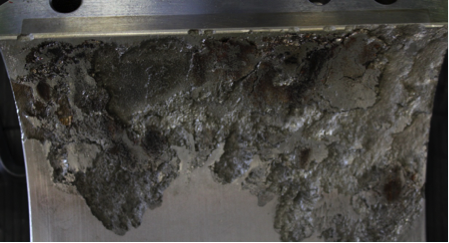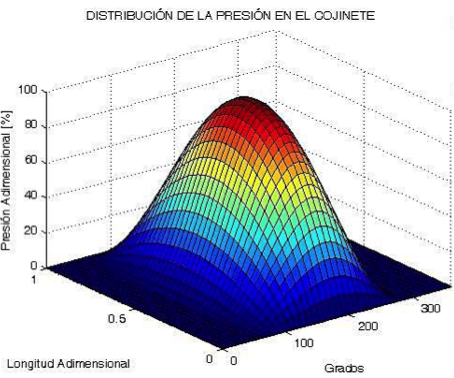Failure in a sliding bearing of a steam turbine speed reducer
The turbine of a thermoelectric self-generation plant presented an unexpected stop during operation, generating losses due to the time that the plant stopped producing.
The system showed a signal of vibration increasing in the speed reducer above the permitted limits for the operation of the plant. When the equipment was inspected, it was found that the sliding bearing of the high-speed shaft presented several marks of wear on its inner surface as well as detached material; therefore the turbine was stopped until its repair.

The sliding bearing was disassembled and some samples were extracted from the detached material, as well as the speed reducer lubricant. Kobaltum engineers went to the self-generation plant and the failure surface of the component was examined through visual inspection.

Characteristic marks of cavitation and adhesion were found on the failure surface near the zones where the lubricant is supplied.
In the analysis of the detached material it was found that it is composed of Babbitt, which is a suitable material for this sort of applications. On the other hand, in the lubricant analysis it was found excessive contamination, possibly due to the detached material of the sliding bearing.
The minimum thickness of the lubricant film and its pressure distribution were calculated according to the operating conditions of the speed reducer.

In the analysis it was found that abrupt changes in the shaft speed generated significant variations in the pressure of the lubricant, which increased the probability of cavitation in the sliding bearing. On the other hand, the lubricant film calculated according to the operating conditions of the equipment was thinner than the minimum necessary for the application.
Additionally, the data recorded of the vibration sensors were analyzed in accordance to ISO 10816-1 standard, where it was evident the increasing tendency of the vibration in the speed reducer during three months, reaching a vibration velocity level unsatisfactory for the operation of the self-generation plant.

In conclusion, the root cause of failure of the sliding bearing was caused by the changing operating conditions, which means, abrupt increases in the shaft velocity generated the turbulence in the lubricant flux and later wear due to cavitation in the bearing surface. This caused the breakup of the lubricant film, then the metal-metal contact between the surfaces of the shaft and the sliding bearing, and finally the vibration increasing up to critical levels.
This sort of failures allows to see how it is possible to increase the durability of critical components through the operating conditions, avoiding drastic changes in the performance of a machine. In the same way, it can be seen how through the monitoring of the operating variables, like temperature, pressure, lubricant level, and in this case vibration, the failures in components could be predicted aiming to prepare the mitigation activities, either doing changes in the operating conditions or programming corrective maintenance activities in advance.



